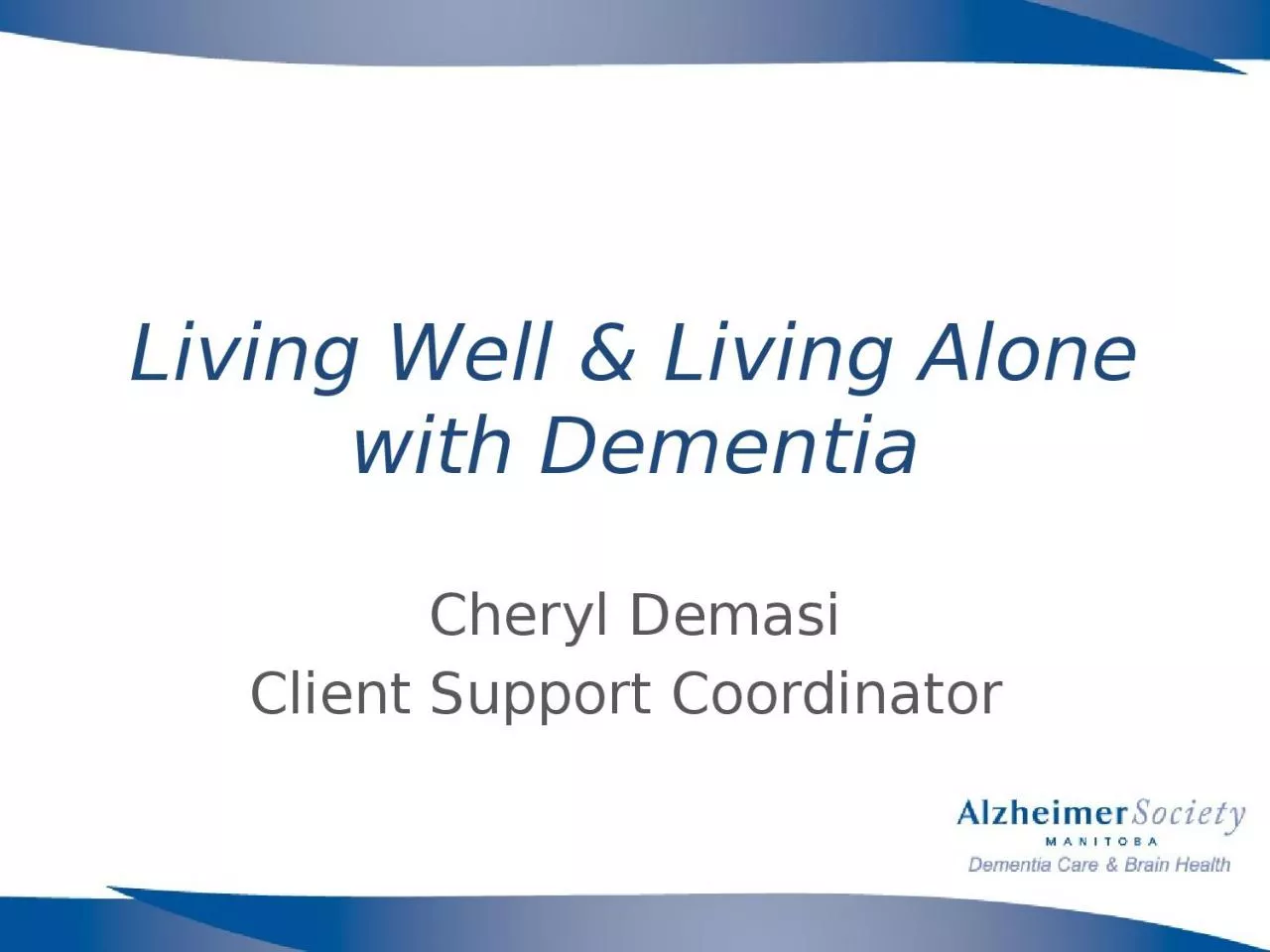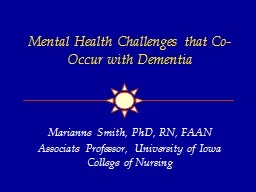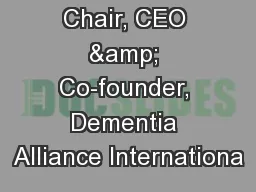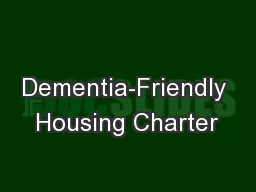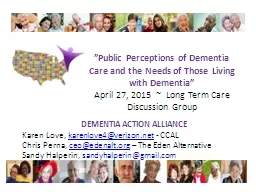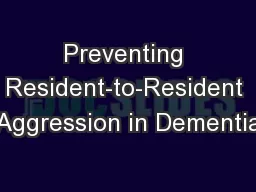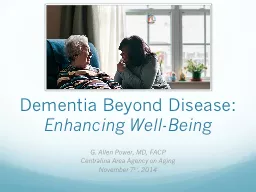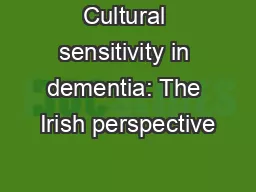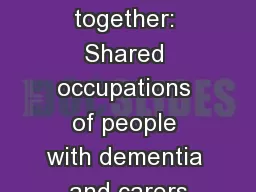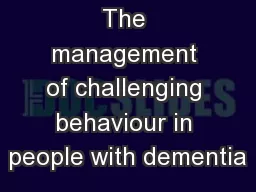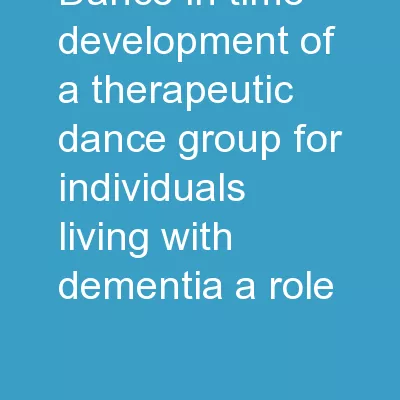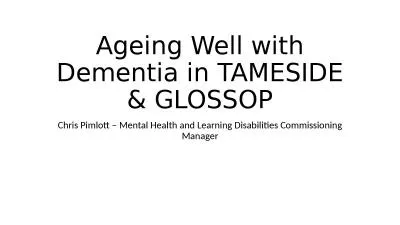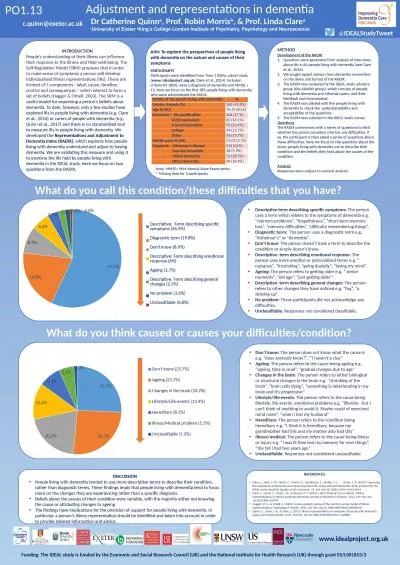PPT-Living Well & Living Alone with Dementia
Author : WickedlyCool | Published Date : 2022-07-28
Cheryl Demasi Client Support Coordinator Facts about Dementia Currently more than 20000 Manitobans have been diagnosed with Alzheimers disease or another dementia
Presentation Embed Code
Download Presentation
Download Presentation The PPT/PDF document "Living Well & Living Alone with Deme..." is the property of its rightful owner. Permission is granted to download and print the materials on this website for personal, non-commercial use only, and to display it on your personal computer provided you do not modify the materials and that you retain all copyright notices contained in the materials. By downloading content from our website, you accept the terms of this agreement.
Living Well & Living Alone with Dementia: Transcript
Download Rules Of Document
"Living Well & Living Alone with Dementia"The content belongs to its owner. You may download and print it for personal use, without modification, and keep all copyright notices. By downloading, you agree to these terms.
Related Documents

